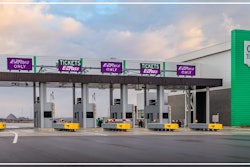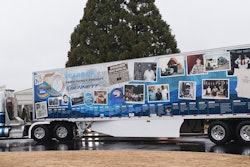When the commercial hydrogen fueling infrastructure develops for Class 8 commercial trucks, California’s Port of Oakland may be the epicenter from which the buildout eventually emanates.
FirstElement Fuel, the largest hydrogen refueling provider in California with 80-percent market share and 41 True Zero-branded light-duty hydrogen stations in operation, is opening the first ever commercial heavy-duty hydrogen refueling station outside the Port of Oakland. The new station has two heavy-duty pumps capable of supporting 200 trucks per day at a rate of just 10 minutes per 80-kg fill. The station also has four light- and medium-duty pumps onsite to serve as another location for California’s estimated 16,000-vehicle passenger car market.
FirstElement Fuel’s Port of Oakland station uses a cryopump to convert liquid hydrogen into cold, compressed hydrogen in a single stage. The company is partnering with Bosch Rexroth to retrofit the station with Bosch’s next-generation cryopump capable of dispensing 100 kg in 10 minutes.
The new station is part of a state-funded NorCal Zero project developed in conjunction with Hyundai Motor Company and the Center for Transportation and the Environment. The project is funded by the California Energy Commission and the California Air Resources Board.
 FIrstElement Fuels' heavy-duty hydrogen dispensers are capable of fueling a Class 8 hydrogen fuel cell tractor in 10 minutes.
FIrstElement Fuels' heavy-duty hydrogen dispensers are capable of fueling a Class 8 hydrogen fuel cell tractor in 10 minutes.
Liquid hydrogen provides several advantages over gaseous hydrogen. Delivery of gaseous hydrogen to a refueling station results in a roughly 50-percent efficiency loss as the pressurized gas in the delivery tanker reaches equilibrium with the onsite storage tank. “We found that even for these small stations that filled about 40 cars a day, we sometimes had to do two or even three deliveries to meet the needs of the customer demand,” said Stephens. “We quickly saw that this was a system that couldn't scale and couldn't be viable.”
Liquid hydrogen is about 10 times denser than gaseous hydrogen, and nearly all of it can be offloaded from the tanker trailer into the onsite storage tower. “It also means that you can hold a much larger volume in a much smaller footprint when you're storing liquid hydrogen,” added Stephens.








